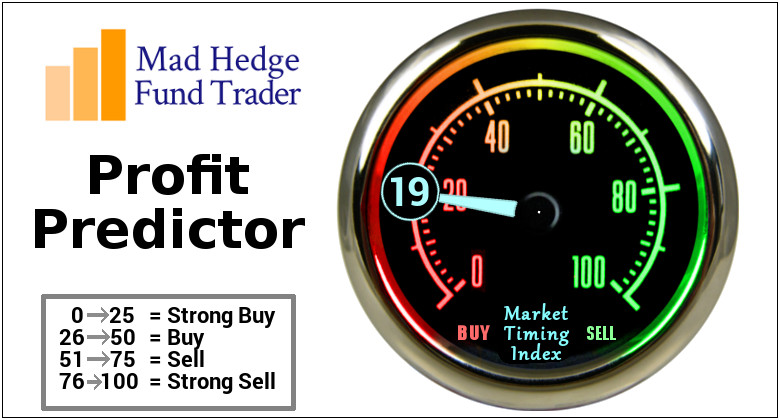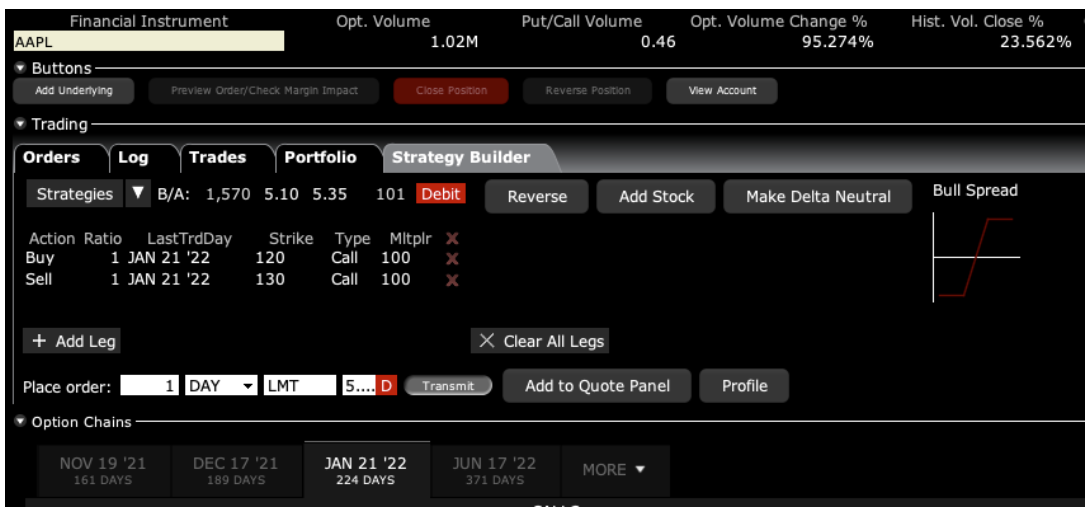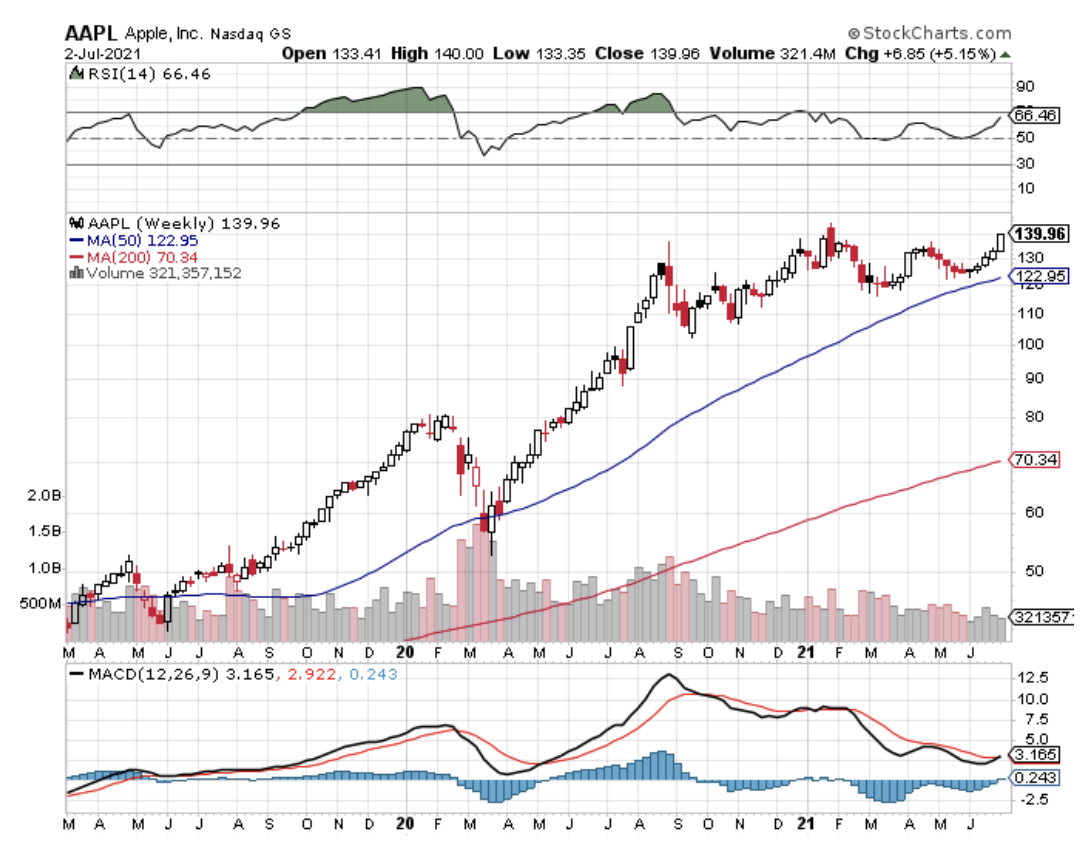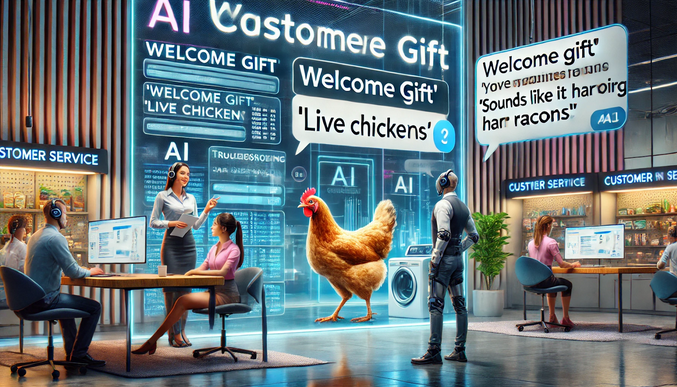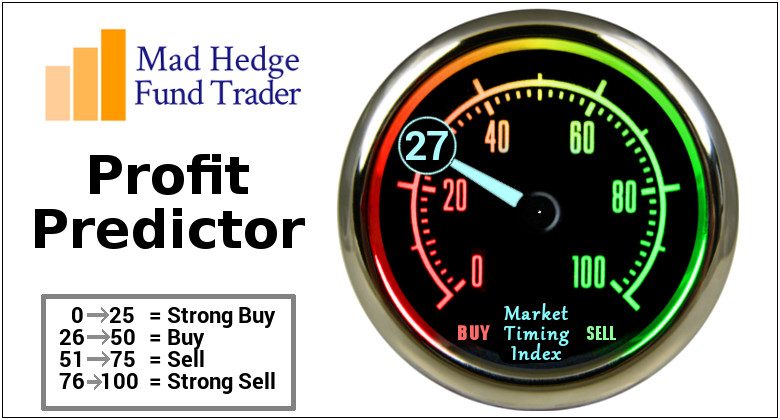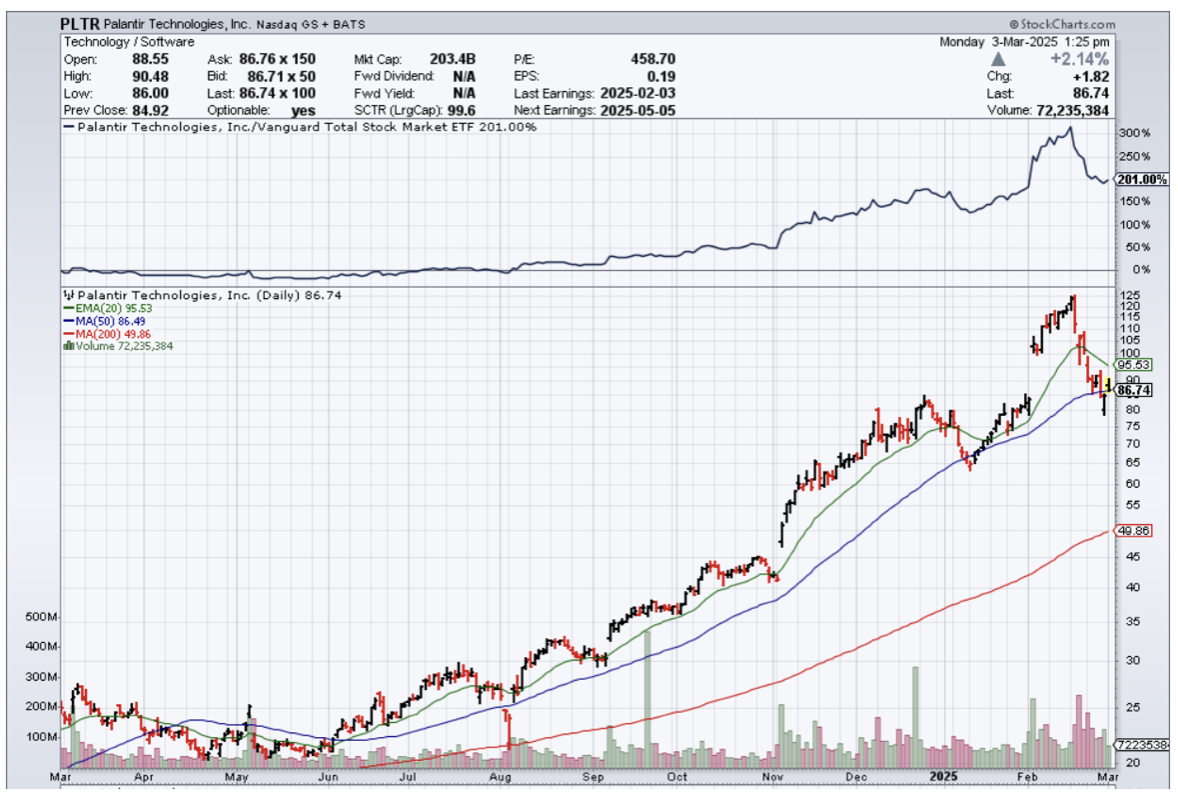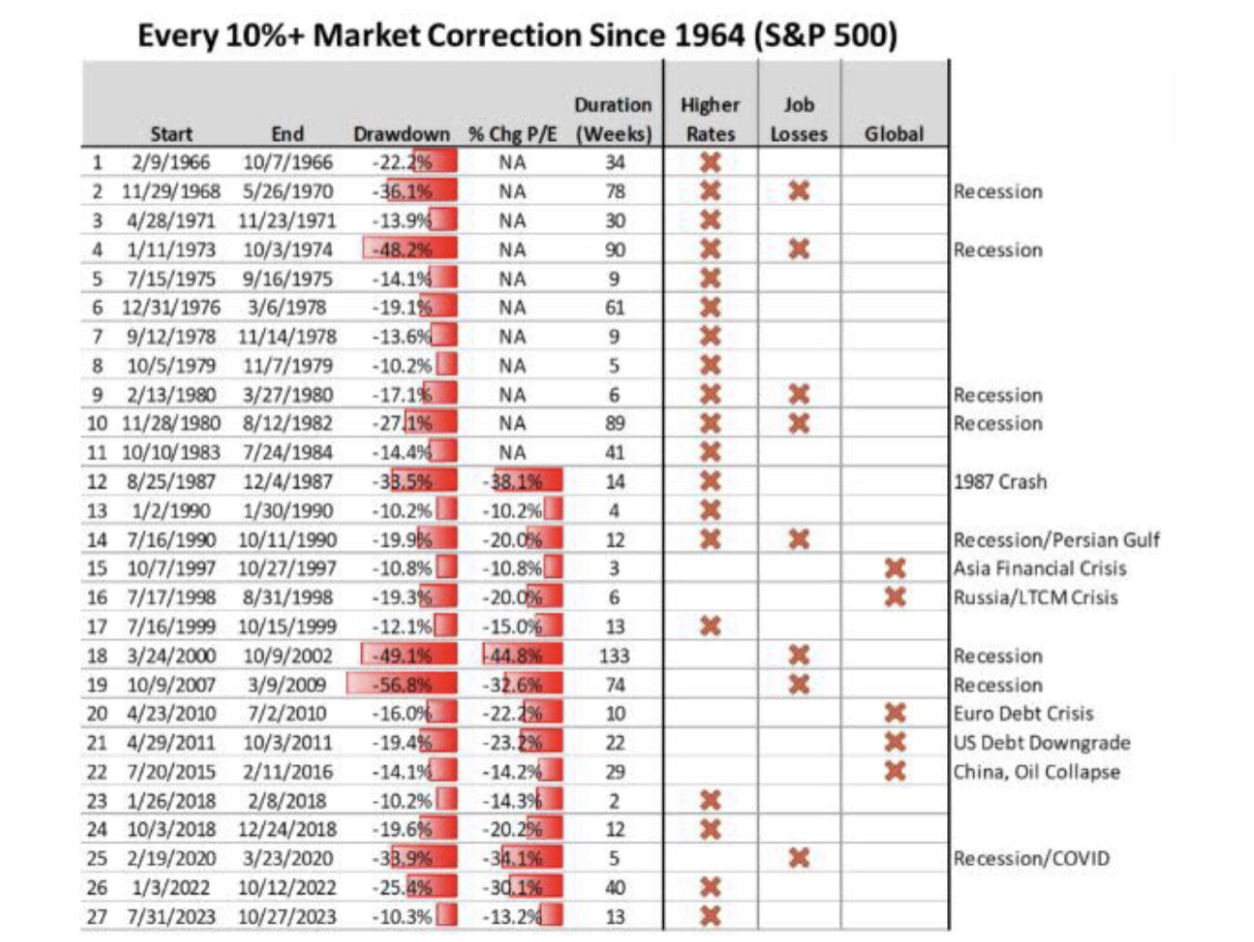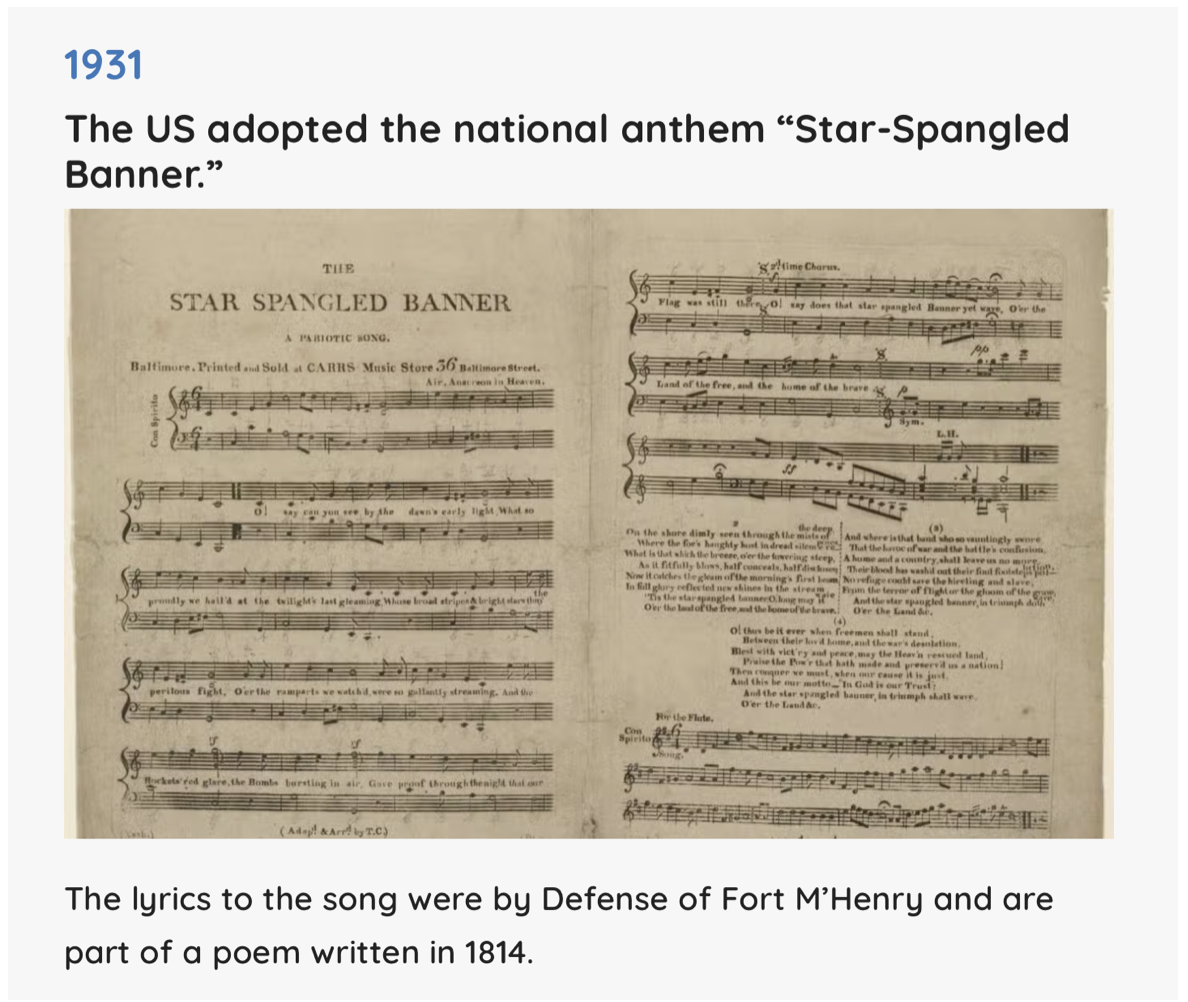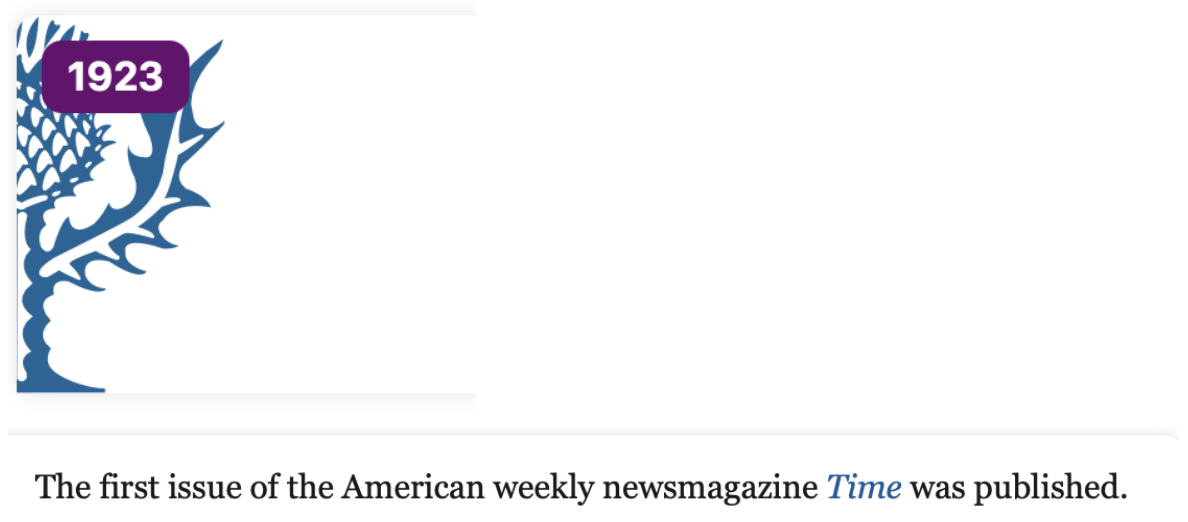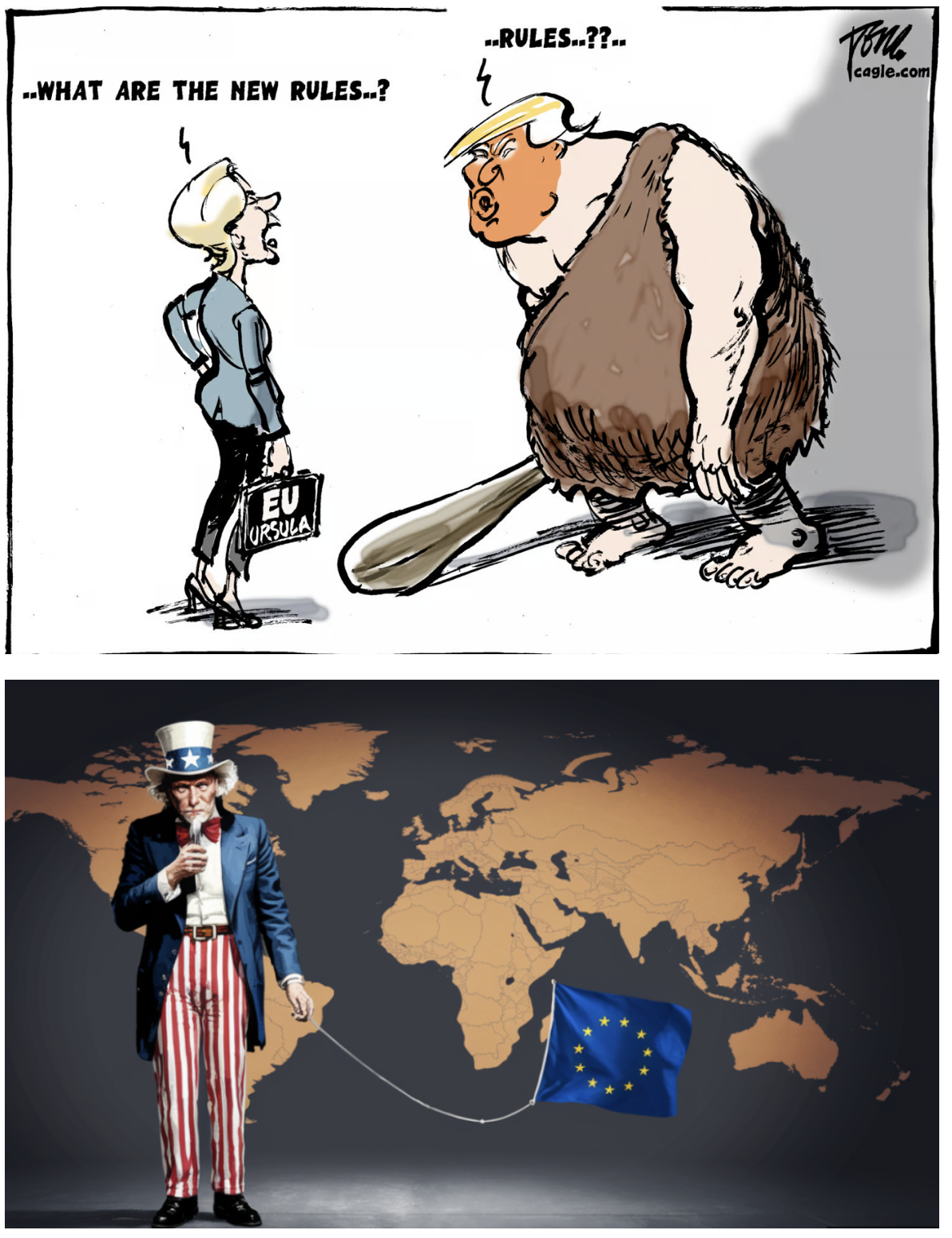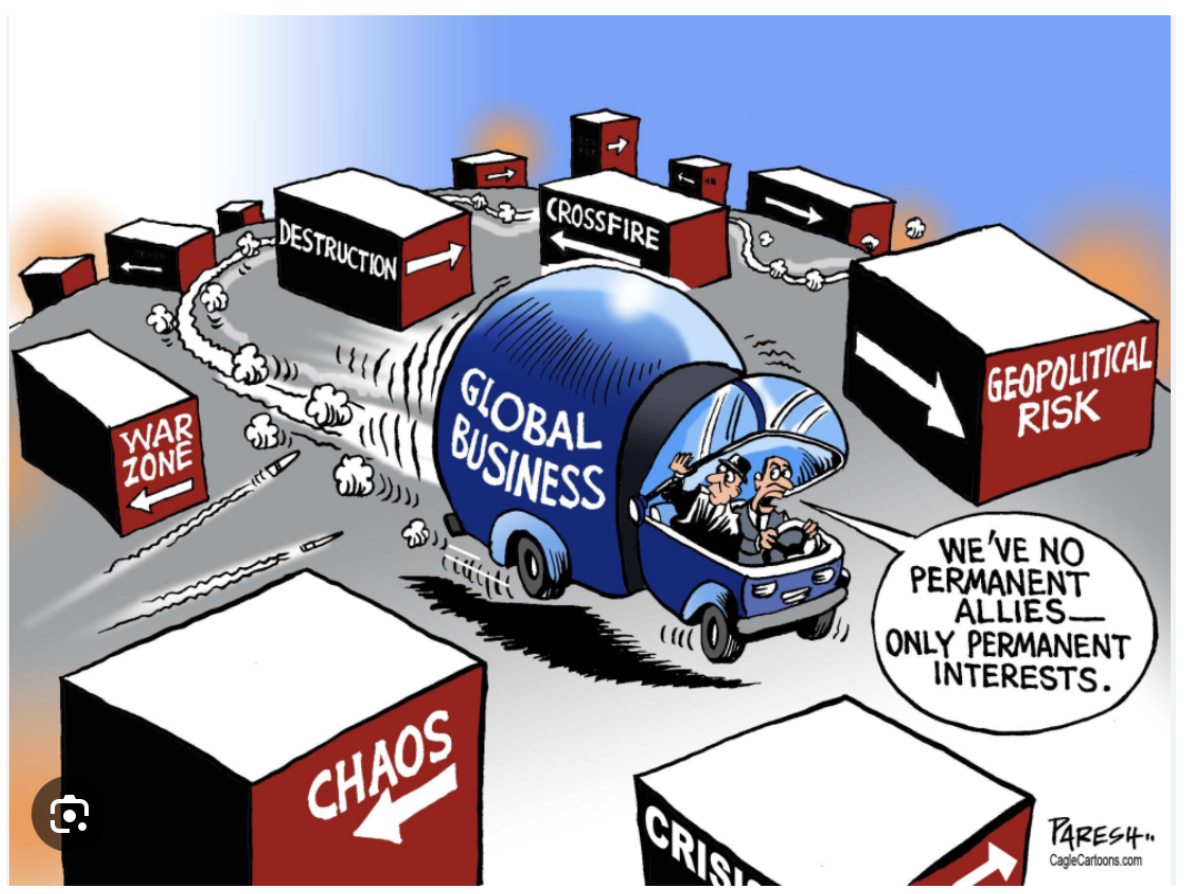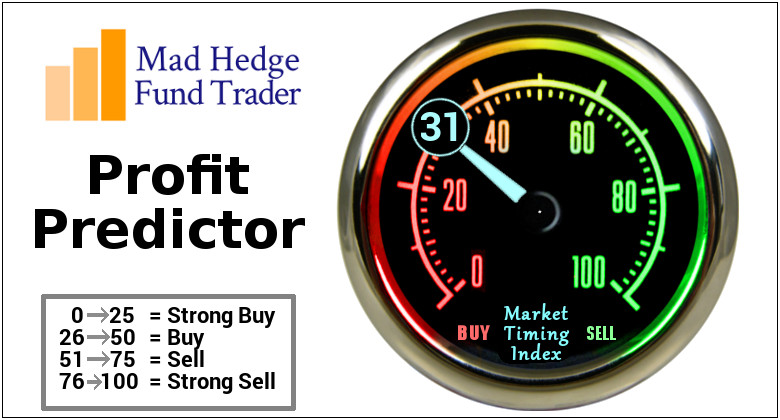When John identifies a strategic exit point, he will send you an alert with specific trade information as to what security to sell, when to sell it, and at what price. Most often, it will be to TAKE PROFITS, but on rare occasions, it will be to exercise a STOP LOSS at a predetermined price to adhere to strict risk management discipline. Read more
Global Market Comments
March 4, 2025
Fiat Lux
Featured Trade:
(A BUY WRITE PRIMER),
(AAPL), (AMZN), (GOOGL)
With both market technical and fundamentals going to hell in a handbasket, it’s time to take a refresher course on “Buy Writes.”
I have advised followers to dump the positions they are dating and only keep the ones they are married to. It’s worth enduring a 30% drawdown in a high-quality name to capture a 300% profit over the long term.
If you sell an Amazon (AMZN) or Alphabet (GOOGL) now, I guarantee you that you’re not going to be able to buy them back at the bottom. For a start, when these do bottom out, the universal advice is to sell them because the world is ending….again.
There is always a way to make money in the stock market. Get the direction right, and the rest is a piece of cake.
But what if the market is going nowhere, trapped in a range, with falling volatility? Yes, there is even a low risk, high return way to make money into this kind of market, a lot like the one we have now.
And that’s the way markets work. It’s like watching a bouncing ball, with each successive bounce shorter than the previous one. Thank Leonardo Fibonacci for this discovery (click here for details).
Which means a change in trading strategy is in order. The free lunch is over. It’s finally time to start working for your money.
When you’re trading off a decade low its pedal to the metal, full firewall forward, full speed ahead, damn the torpedoes. Your positions are so aggressive and leveraged that you can’t sleep at night.
Some four years into the bull market, not so much. It’s time to adjust your trades for a new type of market that continues to appreciate, but at a slower rate and not as much.
Enter the Buy Write.
A buy write is a combination of positions where you buy a stock and also sell short options on the same stock against the shares at a higher price, usually on a one-to-one basis.
“Writing” is another term for selling short in the options world because you are, in effect, entering into a binding contract. When you sell short option, you are paid the premium and the buyer pays, and the cash sits in your brokerage account, accruing interest.
If the stock rallies, remains the same price, or rises just short of the strike price you sold short, you get to keep the entire premium.
Most buy writes take place in front month options, and the strike prices are 5% or 10% above the current share price. I’ll give you an example.
Let’s say you own 100 shares of Apple (AAPL) at $140. You can sell short one August 2021 $150 call for $1.47. You will receive the premium of $147.00 ($1.47 X 100 shares per option). Remember, one option contract is exercisable into 100 shares.
As long as Apple shares close under $150 at the August 20 option expiration, you get to keep the entire premium. If Apple closes over $150, you automatically become short 100 Apple shares. Then, you simply instruct your broker to cover your short in the shares with the 100 Apple shares you already have in your account.
Buy writes accomplish several things. They reduce your risk, pare back the volatility of your portfolio, and bring in extra income. Do these write, and it will enhance the overall performance of your portfolio.
Knowing when to strap these babies on is key. If the market is going straight up, you don’t want to touch buy writes with a ten-foot pole as your stock will be called away, and you will miss substantial upside.
It’s preferable to skip dividend-paying months, usually March, June, September, and December, to avoid your short option getting called away mid-month by a hedge fund trying to get the dividend on the cheap.
You don’t want to engage in buy writes in bear markets. Whatever you take in with option premium, it will be more than offset by losses on your long stock position. You’re better off just dumping the stock instead.
Now comes the fun part. As usual, there are many ways to skin a cat.
Let’s say that you are a cautious sort. Instead of selling short the $150 strike, you can sell the $155 strike for less money. That would bring in $79 per option. But your risk of a call away drops, too.
You can also go much further out in your expiration date to bring in more money. If you go out to the January 18, 2022, expiration, you will take in a hefty $6.67 in option premium, or $667 per option. However, the likelihood of Apple rising above $150 and triggering a call away by then is far greater.
Let’s say you are a particularly aggressive trader. You can double your buy-write income by doubling your option short sales at the ratio of 2:1. However, if Apple closes above $150 by expiration day, you will be naked short 100 shares of Apple.
It is likely you won’t have enough cash in your account to meet the margin call for selling short 100 shares of Apple, so you will have to buy the shares in the market immediately. It is something better left to professionals.
How about if you are a hedge fund trader with a 24-hour trading desk, a good in-house research department, and serious risk control? Then you can entertain “at-the-money buy writes.”
In the case of Apple, you could buy shares and sell short the August 20 $140 calls against them for $4.45 and potentially take in $4.45 for each 100 Apple shares you own. Then, you make a decent profit if Apple remains unchanged or goes up less than $4.45.
That amounts to a $3.18% return in 34 trading days and annualizes out at 26%. In bull markets, hedge funds execute these all day long, but they have the infrastructure to manage the position. It’s better than a poke in the eye with a sharp stick.
There are other ways to set up buy wrights.
Instead of buying stock, you can establish your long position with another call option. These are called “vertical bull call debit spreads” and are a regular feature of the Mad Hedge Trade Alert Service. “The “vertical” refers to strike prices lined up above each other. The “debit” means you have to pay cash for the position instead of getting paid for it.
How about if you are a cheapskate and want to get into a position for free? Buy one call option and sell short two call options against it for no cost. The downside is that you go naked short if the strike rises above the short strike price, again triggering a margin call.
Here is my favorite, which I regularly execute in my own personal trading account. Buy long-term LEAPS (Long Term Equity Anticipation Securities) spreads like I recommended three weeks ago with the (AAPL) January 21 $120-$130 vertical bull call spread for $5.20.
On Friday, it closed at $7.21, up 38.65%.
This is a bet that one of the world’s fastest-growing companies will see its share unchanged or higher in seven months. In Q1, Apple’s earnings grew by an astonishing 35% to $23.6 billion. Sounds like a total no-brainer, right?
If I run this position all the way to expiration, and I probably will, the total return will be ($10.00 - $5.20 = $4.80), or ($4.80/$5.20 = 92.31%) by the January 21, 2022, option expiration. This particular expiration benefits from the year-end window dressing surge and the New Year asset allocation into equities.
Whenever we have a big up month in the market, I sell short front-month options against it. In this case, that is the August 20 $150 calls. This takes advantage of the accelerated time decay you get in the final month of the life of an option, while the time decay on your long-dated long position is minimal.
Keep in mind that the deltas on LEAPS are very low, usually around 10%, because they are so long-dated. That means your front month short should only be 10% of the number of shares owned through your LEAPS in order to stay delta-neutral. Otherwise, you might get hit with a margin call you can’t meet.
After doing this for 53 years, it is my experience that this is the best risk/reward options positions available in the market.
To make more than 92.31% in seven months, you have to take insane amounts of risk or engage in another profession, like becoming a rock star, drug dealer, or Bitcoin miner.
I’m sure you’d rather stick to options trading, so good luck with LEAPS.
AI Tech Letter
(THOSE AREN'T CHICKENS IN YOUR TRANSLATOR APP)
(IBEX)
I was flying back from Monterey last month when I found myself eavesdropping on a fascinating exchange at the customer service counter.
The passenger ahead of me—clearly not a native English speaker—was struggling to explain his situation to an agent who spoke only English.
Then, the agent tapped her screen, and suddenly, she was responding in his language with surprising accuracy.
Curious, I leaned in as she handed him a feedback form. "How was your experience with our new AI-powered translation service?" it read.
When my turn came, she confirmed the system was new. "It’s a game-changer," she said. "Three weeks ago, we'd have needed a translator or spent half an hour playing charades."
This experience came to mind as I dug into IBEX Limited (IBEX), a Washington D.C.-based company positioning itself at the intersection of old-school customer service and cutting-edge AI.
Their business process outsourcing services have earned them a reputation for high-quality omnichannel support across growing offshore markets, with a focus on using AI, automation, and data analytics to transform how brands engage with customers.
Remember when "customer service" meant being stuck on hold for an hour while a recorded voice assured you that your call was "very important"? IBEX is changing that narrative.
Their Wave iX solutions don't replace humans—they enhance them. One hospitality client now deploys English-speaking agents with AI-powered translation to handle multilingual interactions (goodbye language barriers and soul-crushing hold music).
The quality of these translations is what sets them apart in a world where most translation apps still turn phrases like "welcome gift" into "live chickens" (true story from my last international trip).
Their AI also handles routine inquiries ("What are your hours?") while humans tackle the complex ones ("Why does my new dishwasher sound like it's harboring raccoons?").
It's essentially digital triage at its finest—at least until that gets disrupted too, which in Silicon Valley terms means sometime next Tuesday.
Now, let's talk numbers. IBEX posted a record-breaking second quarter with revenues hitting $140.7 million, up 6.1% year-over-year.
Their "land-and-expand playbook" brought in five new major clients this quarter alone. Earnings per share came in at $0.59 (beating expectations by $0.08), with adjusted EBITDA climbing to $16.5 million and margins improving to 11.8%.
If you're new to investing, beating analyst expectations is like showing up to your in-laws' house with an expensive bottle of wine—it won't solve all your problems, but it certainly helps set a positive tone.
The sector breakdown tells another interesting story.
Offshore operations (now 53% of total revenue) grew by 14%, while HealthTech surged 31%—no surprise to anyone who's visited a doctor's office lately and watched them wrestle with patient management software.
Travel, logistics, and retail also saw healthy increases. A significant move this quarter was IBEX's buyback of 3.6 million shares from TRGI, freeing it from "controlled company" status and helping boost EPS by 36%.
But let's not pop the champagne just yet. For all its strong earnings, IBEX has some glaring weak spots.
Revenue growth is anemic at 1.66%—well below the sector median of 3.93%. The FinTech segment is particularly troubling, with revenue down 15%.
Cash flow remains negative (they burned through $3.2 million), and their net cash position dropped precipitously from $60.8 million to just $13.7 million thanks to that $70 million share buyback.
It's like bragging that you're only losing $100 at the poker table instead of $200—technically an improvement, but your wallet still gets lighter.
Management has also acknowledged that costs related to AI implementation and infrastructure are rising, potentially squeezing margins in the latter half of fiscal 2025.
Meanwhile, customers are taking longer to pay (Days Sales Outstanding extended from 75 to 79 days), which could further strain working capital.
So what's the bottom line? At its current valuation—9.97x forward P/E for 2025 and 8.61x for 2026—IBEX might represent a bargain for investors who believe in the long-term promise of AI-driven outsourcing.
I've been trading long enough to know that sometimes the market offers gifts for those willing to look past short-term turbulence.
For the stock to realize its potential upside, however, IBEX needs to demonstrate stronger revenue growth and better cash flow management.
If it succeeds, a move toward a 12x–14x P/E range would offer meaningful upside. If not, it could remain stuck in what I call "value trap purgatory."
As for me, I'm keeping IBEX on my watchlist—right next to “learn a second language” and “never fly standby again.” Some opportunities, like some flights, are worth waiting for.
Mad Hedge Technology Letter
March 3, 2025
Fiat Lux
Featured Trade:
(PALANTIR IS ONE TO LOOK AT)
(PLTR), (AI)
Even with Palantir’s short-term pullback of 30%, the stock is still up 16% year to date, showing how potent the price action of the stock really is.
There is a lot to like about PLTR, especially its connection to the White House.
Lost in all the commotion of the sell-off, this is a legit AI company, and companies of this ilk are fetching massive premiums on the open market.
Therefore, I wouldn’t view this firm with a glass-half-empty type of price trajectory because legit AI companies get bought up on the dip for a reason.
Much of the downdraft in shares has to do with all the federal budget cuts.
The amount of fraud that occurred is staggering, but I don’t think the feds will throw out the baby with the bath water.
These companies aids in the security of the United States through software, and I don’t think this business is going away anytime soon.
I also don’t believe any cuts from the federal government will hurt PLTR.
This company is not syphoning off taxpayer funds and has a lot of credibility in business circles.
The artificial intelligence (AI) company is growing quickly, but due to its reliance on government contracts, investors are worried that potential budget cuts at the Department of Defense and other government agencies could hurt the business. Despite the drawdown, Palantir is still valued at over $195 billion.
New Secretary of Defense Pete Hegseth said he aims to cut 8% from the defense budget every year for the next five years. That is not a one-time cut of 8% but five consecutive years of cuts.
Hegseth is starting with civilian workers, aiming to cut over 5,000 people from the payroll. Investors took this as a negative sign for Palantir and other defense contractors, breaking the momentum of the stock.
In 2024, Palantir generated $1.57 billion in revenue from government contracts, making it only a small part of the federal budget. Despite the current administration's proposed cost cuts, I still expect this figure to grow in the coming years.
In recent years, government contracts have also become a shrinking share of Palantir's top line. A push into the commercial sector has been very successful, with the company winning hundreds of customers for its AI and software tools.
U.S. commercial revenue grew 64% year over year in Q4 2024 to $214 million, and the commercial segment now makes up 45% of overall sales. While the government segment is still growing, the commercial side is growing even faster.
The commercial market is simply much larger and could provide a $10 billion-plus revenue opportunity for Palantir. Last quarter, its backlog for U.S. commercial contracts grew 99% year over year to $1.79 billion.
Any weakness at the government level could be made up by private sector businesses.
Once looking at the real numbers, PLTR is the real deal, and one of its founders, Peter Thiel, is the mentor to the United States Vice President JD Vance.
Ultimately, I felt a bullish position is worth the risk in the short-term, and I believe by March 21, the stock should stay above $72.50.
“Man has the power to act as his own destroyer - and that is the way he has acted through most of his history.” – Said Elon Musk
(IT’S MARCH 2025 – LET THE TARIFF WARS BEGIN)
March 3, 2025
Hello everyone
WEEK AHEAD CALENDAR
MONDAY MARCH 3
9:45 a.m. S&P PMI Manufacturing final (February)
10:00 a.m. Construction Spending (January)
10:00 a.m. ISM Manufacturing (February)
TUESDAY MARCH 4
2:20 p.m. New York Federal Reserve Bank President and CEO John Williams speaks at Bloomberg Invest in New York.
Earnings: Ross Stores, CrowdStrike Holdings, Best Buy, AutoZone
Tariffs on Canada, Mexico set to go into effect, and those on China are raised.
9:00 p.m. Presidential address to joint session of Congress is traditionally held.
WEDNESDAY MARCH 5
8:15 a.m. ADP Employment Survey (February)
9:45 a.m. PMI Composite final (February)
9:45 a.m. S&P PMI Services final (February)
10:00 a.m. Durable Orders final (January)
10:00 a.m. Factory Orders (January)
10:00 a.m. ISM Services PMI (February)
2:00 p.m. Federal Reserve Beige Book
6:15 p.m. New York Federal Reserve Bank SOMA Manager Roberto Perli gives keynote remarks on Monetary Policy Implementation in New York.
Earnings: Campbell’s Company
THURSDAY MARCH 6
8:30 a.m. Continuing Jobless Claims (02/22)
8:30 a.m. Initial Claims (03/01)
8:30 a.m. Unit Labour Costs final (Q4)
8:30 a.m. Productivity final (Q4)
8:30 a.m. Trade Balance (January)
10:00 a.m. Wholesale Inventories final (January)
Earnings: Broadcom, Hewlett Packard Enterprise, Costco Wholesale, Fastenal, Kroger
FRIDAY MARCH 7
8:30 a.m. February Jobs Report
10:45 a.m. New York Federal Reserve Bank President and CEO John Williams discusses at UD Monetary Policy Forum Report “Monetary Policy Transmission Post-Covid,” NY.
Welcome to the month of March. Investors may be hoping for some sort of relief from the volatility of late, but that may not arrive this month. There are many challenges ahead this month. President Trump’s tariffs on Mexico and Canada are expected to go into effect on Tuesday, March 4, along with an additional 10% on China.
With earnings season behind us, investors will be looking ahead to the Federal Reserve meeting on the 18th and 19th. There is hope that weak price data may pave the way to support a central bank rate-cutting path. Of course, investors are expecting that the weak data will be balanced by an economy strong enough to avoid concerns about growth and profits. However, I believe that any rate cuts will be a long shot and advise not to place your hopes on this outcome. Rather, investors should be prepared for the strong possibility of no rate cuts and eventual rate hikes later this year.
The February jobs report on Friday is expected to show that the labour market is easing, with fewer jobs being created and businesses shutting the door on new hires.
Economists expect that the U.S. economy added 160,000 jobs last month, up from 143,000 jobs in January, with the unemployment rate holding at 4.0%, according to FactSet.
Investors are wary of weakness in the months to come. However, many are confident that the stock indexes will see good advances this year despite their concerns around Trump’s trade policies.
Cryptocurrencies rallied on Sunday after President Trump announced the creation of a strategic crypto reserve for the United States that sill include Bitcoin and Ether, as well as XRP, Solana’s SOL token, and Carano’s ADA.
Trump posted on Truth Social that he wants to “make sure the U.S. is the Crypto Capital of the World.”
XRP surged 33%, Cardano’s coin soared more than 60%, Ether gained 13%, and Bitcoin rose 10% to $94,343.82 after dipping to a three-month low under $80,000 last Friday.
=========================================================================
Congratulations to ‘Anora’, the film that cleaned up at the Oscars.
=========================================================================
Cyclone Alfred is on track to strike the Southeast Qld coast later this week (very close to Brisbane). It is about 50 years since this part of Queensland has experienced a cyclone. Cars have formed mile-long lines to fill up sandbags to protect their properties and businesses. Some shelves in supermarkets are empty - bread, toilet paper, and water have been the most popular items. Generators, batteries, and torches have also been flying off the shelves in camping stores. Beaches along the Queensland coast are already feeling the effects of Alfred, with severe erosion seen in some areas, while out on the water, surfers have been enjoying three metres waves. By Wednesday and Thursday, cyclonic force winds are expected, and 20 inches of rain may fall. Batten down the hatches! Stay safe.
Taken Monday, this picture shows our beautiful sandy beaches have almost disappeared from the effects of Cyclone Alfred. We are waiting for it to cross the coast on Thursday.
Thank you to those who attended the February Jacquie’s Post Zoom Meeting over the weekend. Everybody was able to share their thoughts about world events, so a great meeting overall. A recording will be sent out shortly.
MARKET UPDATE
S&P500
The index bounced last Friday from the base of the rising wedge (5825/50). There is scope for more ranging and potentially even gains back toward the Feb peak at 6147, or even between 6150 -6300, before we turn sharply lower. Please keep sell-stops in place on all your stock holdings. The next 3-5 years could be the most volatile since the Great Recession.
Resistance = 5955/65 and 5990/00
Support = recent low at rising wedge support ~ 5850
GOLD
WE have seen a correction in gold, which should be a precursor to new highs. (maybe within a month or so). Volatility is high, so if you are long gold in any vehicle, make sure you have sell-stops in place.
Resistance = $2865/70 and $2892
Support = $2829/$2790 area
BITCOIN
Bitcoin bounced off the $78.2k low. We could continue this range-like price movement for another couple of months. The odds remain high that Bitcoin will reach $150 in the next 12 months. (If you bought Bitcoin at the recent low, make sure you have a stop in place at $70k). However, if Bitcoin breaks $64,000 at any time in 2025, it will suggest a (b) wave has concluded. If that occurs, a 1–2-year decline is underway with a downside target below $32,000. Make sure your sell-stops are in place.
Resistance =92.1/92.6k
Support = 78.2/79.2k area/ 82.6/83 area
QI CORNER
HISTORY CORNER
On March 3
GEOPOLITICS CORNER
SOMETHING TO THINK ABOUT
Cheers
Jacquie
When John identifies a strategic exit point, he will send you an alert with specific trade information as to what security to sell, when to sell it, and at what price. Most often, it will be to TAKE PROFITS, but on rare occasions, it will be to exercise a STOP LOSS at a predetermined price to adhere to strict risk management discipline. Read more
Global Market Comments
March 3, 2025
Fiat Lux
Featured Trade:
(MARKET OUTLOOK FOR THE WEEK AHEAD, or ARMAGEDDON)
(JPM), (IBKR), (TSLA), (NVDA), (TLT), (GS), (BRK/B), (PRIV), (GLD), (FXI)
Legal Disclaimer
There is a very high degree of risk involved in trading. Past results are not indicative of future returns. MadHedgeFundTrader.com and all individuals affiliated with this site assume no responsibilities for your trading and investment results. The indicators, strategies, columns, articles and all other features are for educational purposes only and should not be construed as investment advice. Information for futures trading observations are obtained from sources believed to be reliable, but we do not warrant its completeness or accuracy, or warrant any results from the use of the information. Your use of the trading observations is entirely at your own risk and it is your sole responsibility to evaluate the accuracy, completeness and usefulness of the information. You must assess the risk of any trade with your broker and make your own independent decisions regarding any securities mentioned herein. Affiliates of MadHedgeFundTrader.com may have a position or effect transactions in the securities described herein (or options thereon) and/or otherwise employ trading strategies that may be consistent or inconsistent with the provided strategies.


